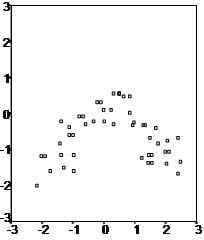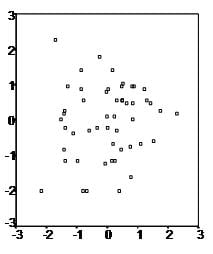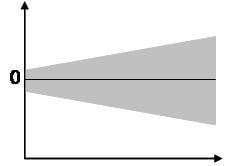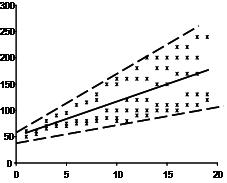Assumptions of Multiple Linear Regression
Multiple linear regression analysis is predicated on several fundamental assumptions that ensure the validity and reliability of its results. Understanding and verifying these assumptions is crucial for accurate model interpretation and prediction.
Linear Relationship: The core premise of multiple linear regression is the existence of a linear relationship between the dependent (outcome) variable and the independent variables. This linearity can be visually inspected using scatterplots, which should reveal a straight-line relationship rather than a curvilinear one.
Multivariate Normality: The analysis assumes that the residuals (the differences between observed and predicted values) are normally distributed. This assumption can be assessed by examining histograms or Q-Q plots of the residuals, or through statistical tests such as the Kolmogorov-Smirnov test.
No Multicollinearity: It is essential that the independent variables are not too highly correlated with each other, a condition known as multicollinearity. This can be checked using:
Correlation matrices, where correlation coefficients should ideally be below 0.80.
Variance Inflation Factor (VIF), with VIF values above 10 indicating problematic multicollinearity. Solutions may include centering the data (subtracting the mean score from each observation) or removing the variables causing multicollinearity.
Homoscedasticity: The variance of error terms (residuals) should be consistent across all levels of the independent variables. A scatterplot of residuals versus predicted values should not display any discernible pattern, such as a cone-shaped distribution, which would indicate heteroscedasticity. Addressing heteroscedasticity might involve data transformation or adding a quadratic term to the model.
Sample Size and Variable Types: The model requires at least two independent variables, which can be of nominal, ordinal, or interval/ratio scale. A general guideline for sample size is a minimum of 20 cases per independent variable.
Multiple Linear Regression Assumptions
First, multiple linear regression requires the relationship between the independent and dependent variables to be linear. The linearity assumption can best be tested with scatterplots. The following two examples depict a curvilinear relationship (top image) and a linear relationship (bottom image).

Need assistance with your research?
Schedule a time to speak with an expert using the calendar below.
User-friendly Software
Transform raw data to written interpreted results in seconds.

Second, the multiple linear regression analysis requires that the errors between observed and predicted values (i.e., the residuals of the regression) should be normally distributed. This assumption may be checked by looking at a histogram or a Q-Q-Plot. Normality can also be checked with a goodness of fit test (e.g., the Kolmogorov-Smirnov test), though this test must be conducted on the residuals themselves.
Third, multiple linear regression assumes that there is no multicollinearity in the data. Multicollinearity occurs when the independent variables are too highly correlated with each other.
Multicollinearity may be checked multiple ways:
1) Correlation matrix – When computing a matrix of Pearson’s bivariate correlations among all independent variables, the magnitude of the correlation coefficients should be less than .80.
2) Variance Inflation Factor (VIF) – The VIFs of the linear regression indicate the degree that the variances in the regression estimates are increased due to multicollinearity. VIF values higher than 10 indicate that multicollinearity is a problem.
If multicollinearity is found in the data, one possible solution is to center the data. To center the data, subtract the mean score from each observation for each independent variable. However, the simplest solution is to identify the variables causing multicollinearity issues (i.e., through correlations or VIF values) and removing those variables from the regression.
The last assumption of multiple linear regression is homoscedasticity. A scatterplot of residuals versus predicted values is good way to check for homoscedasticity. There should be no clear pattern in the distribution; if there is a cone-shaped pattern (as shown below), the data is heteroscedastic.


If the data are heteroscedastic, a non-linear data transformation or addition of a quadratic term might fix the problem.
Intellectus allows you to conduct and interpret your analysis in minutes. Assumptions are pre-loaded and the narrative interpretation of your results includes APA tables and figures. Click the link below to create a free account, and get started analyzing your data now!
Statistics Solutions can assist with your quantitative analysis by assisting you to develop your methodology and results chapters. The services that we offer include:
Edit your research questions and null/alternative hypotheses
Write your data analysis plan; specify specific statistics to address the research questions, the assumptions of the statistics, and justify why they are the appropriate statistics; provide references
Justify your sample size/power analysis, provide references
Explain your data analysis plan to you so you are comfortable and confident
Two hours of additional support with your statistician
Quantitative Results Section (Descriptive Statistics, Bivariate and Multivariate Analyses, Structural Equation Modeling, Path analysis, HLM, Cluster Analysis)
Clean and code dataset
Conduct descriptive statistics (i.e., mean, standard deviation, frequency and percent, as appropriate)
Conduct analyses to examine each of your research questions
Write-up results
Provide APA 7th edition tables and figures
Explain chapter 4 findings
Ongoing support for entire results chapter statistics
Please call 727-442-4290 to request a quote based on the specifics of your research, schedule using the calendar on this page, or email [email protected]